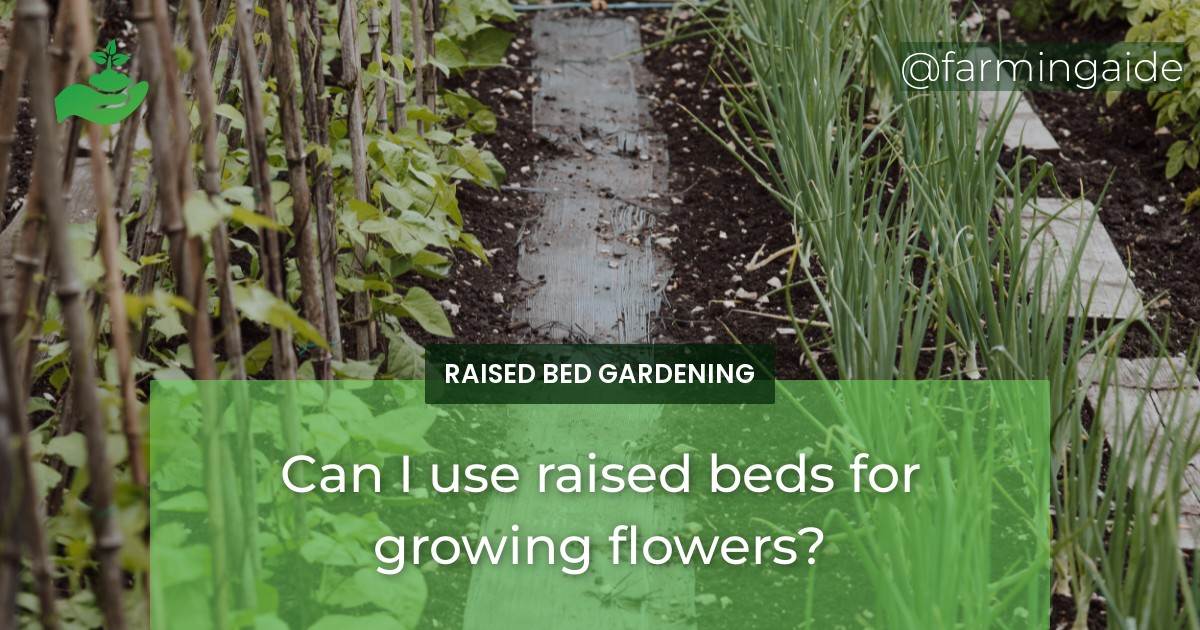Yes, raised beds can be used for growing flowers. In fact, raised bed gardening has become increasingly popular among gardeners due to its numerous benefits. Raised beds provide better soil quality, drainage, and pest control, making them an excellent option for growing flowers in your garden.
Best Flower Varieties for Raised Bed Gardening
Marigold
Marigolds are easy to grow and come in a variety of colors, making them a great choice for raised bed gardening. French and African marigolds are two popular varieties for raised beds.
French Marigold
- Comes in a range of colors, including yellow, orange, and red
- Produces small, compact flowers that are perfect for borders or edging
- Requires full sun exposure and well-draining soil
African Marigold
- Produces large, showy flowers in shades of yellow and orange
- Can grow up to 3 feet tall, making them perfect for adding height to your garden
- Requires full sun exposure and well-draining soil
Petunia
Petunias are another popular choice for raised bed gardening. They come in a variety of colors and are easy to grow.
Wave Petunia
- Produces a profusion of flowers that cascade over the edge of the bed
- Comes in a range of colors, including pink, purple, and white
- Requires full sun exposure and well-draining soil
Supertunia
- Produces large, trumpet-shaped flowers in shades of pink, purple, and white
- Requires full sun exposure and well-draining soil
- Can be grown in containers or in raised beds
Zinnia
Zinnias are colorful and easy to grow, making them a great choice for raised bed gardening.
Dwarf Zinnia
- Produces small, compact flowers in a range of colors, including pink, yellow, and red
- Requires full sun exposure and well-draining soil
- Can be grown in containers or in raised beds
Giant Zinnia
- Produces large, showy flowers in a range of colors, including pink, orange, and purple
- Requires full sun exposure and well-draining soil
- Can grow up to 4 feet tall, making them perfect for adding height to your garden
Sunflower
Sunflowers are a popular choice for raised bed gardening due to their bright, cheerful blooms.
Dwarf Sunflower
- Produces small, compact flowers that are perfect for borders or edging
- Requires full sun exposure and well-draining soil
- Can be grown in containers or in raised beds
Giant Sunflower
- Produces large, showy flowers that can grow up to 15 feet tall
- Requires full sun exposure and well-draining soil
- Can be grown in containers or in raised beds
Pansy
Pansies are a great choice for raised bed gardening due to their small size and wide range of colors.
Giant Pansy
- Produces large, showy flowers in a range of colors, including purple, yellow, and pink
- Requires full sun exposure and well-draining soil
- Can be grown in containers or in raised beds
Trailing Pansy
- Produces small, compact flowers that trail over the edge of the bed
- Comes in a range of colors, including purple, yellow, and white
- Requires full sun exposure and well-draining soil
Benefits of Using Raised Beds for Flower Gardening
Improved Soil Quality
Raised beds are filled with high-quality soil that is free of weeds and other contaminants, providing flowers with the nutrients they need to grow and thrive.
Better Drainage
Raised beds are designed to allow excess water to drain away from the plants, preventing root rot and other water-related issues.
Control over Soil Composition
With raised beds, you have complete control over the soil composition, allowing you to tailor the soil to the specific needs of your flowers.
Pest and Weed Control
Raised beds provide a physical barrier between the plants and the ground, preventing weeds and other pests from infiltrating the flower bed.
Easier Access and Maintenance
Raised beds are elevated off the ground, making them easier to access and maintain. This can be especially helpful for gardeners with mobility issues.
ALSO READ
How to Plant Flowers in Raised Beds
Site Selection
Choose a site that receives at least six hours of sunlight per day and is easily accessible for watering and maintenance.
Preparing the Soil
Fill the raised bed with high-quality soil, compost, and other organic matter to provide the plants with the nutrients they need to grow and thrive.
Planting Tips
- Plant flowers at the appropriate depth and spacing
- Water the plants thoroughly after planting
- Consider using a trellis or other support for climbing plants
Watering Techniques
Water the plants deeply once or twice a week, depending on the weather and soil conditions. Avoid overhead watering, as this can promote diseases and fungal growth.
Fertilization Methods
Apply a balanced fertilizer once a month during the growing season to provide the plants with the nutrients they need to grow and thrive.
Common Challenges and Solutions in Raised Bed Flower Gardening
Soil Compaction
Regularly aerate the soil to prevent compaction and promote healthy root growth.
Drainage Issues
Ensure that the raised bed has adequate drainage and avoid overwatering the plants.
Pests and Diseases
Monitor the plants regularly for signs of pests or diseases and take appropriate action if necessary.
Overcrowding
Avoid overplanting the raised bed to prevent overcrowding and promote healthy plant growth.
Nutrient Deficiencies
Regularly fertilize the plants to prevent nutrient deficiencies and promote healthy growth.


